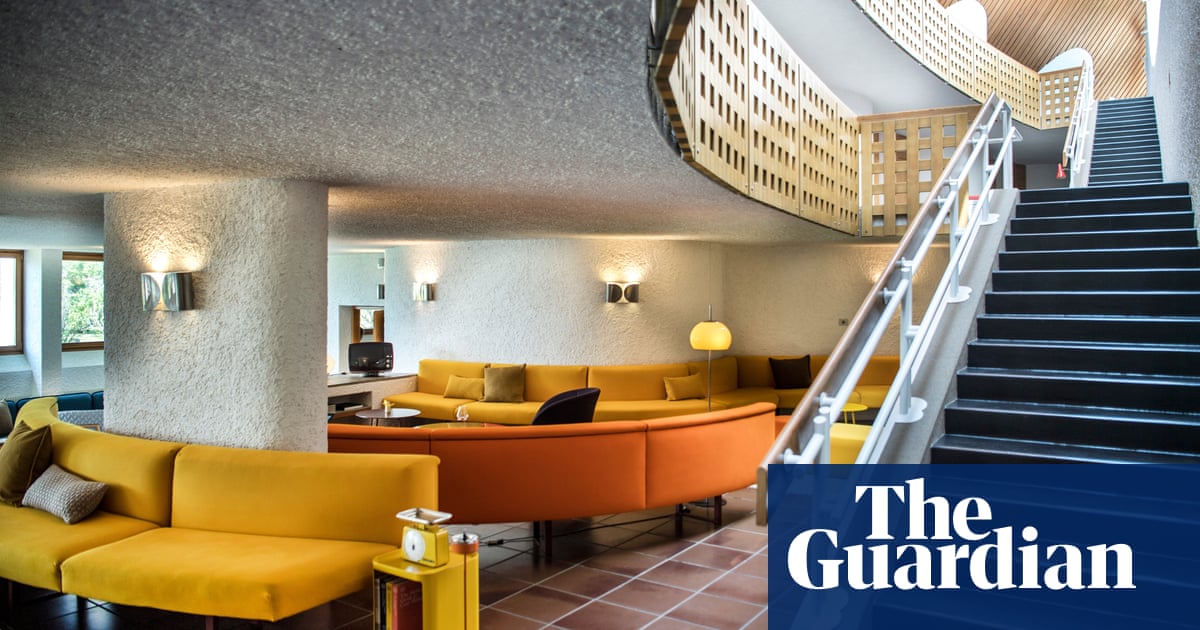When I was about seven years old, my aunt brought me back a souvenir from her trip to America – a yellow trouser suit with yellow-and-purple zigzag-patterned flared trousers. I thought it was the coolest thing I had ever seen and, 50 years later, as I walk into the Seehotel Ambach in Italy’s South Tirol, I can’t help thinking how it’s just the kind of look I should be rocking in the 1970s lobby.
We are greeted by a riot of yellow and orange and a selection of the Italian design industry’s greatest hits from the 70s by Joe Colombo, Ettore Sottsass and others. More recognisable to those not in the know about Milan’s design elite are ashtrays advertising Cinzano, glasses promising the delights of Martini and evocative period commercial poster art. At first it’s hard to get your bearings. It’s not unlike walking into a packed vintage shop on Portobello Road or in Margate, except it’s 33C outside and I can see Lake Caldaro glistening through the window.
Seehotel Ambach was opened in 1973 by Anna Ambach, who continued to live in the hotel’s main suite until her death in 2014. Her nephew, Klaus Maran, inherited the hotel and runs it with his family today. They recount how architect Othmar Barth’s radical design for the hotel shook up the local scene and how Ambach fought for it to be built. In protest, the local mayor refused to grant occupancy permission after the building was completed.
It’s not hard to see why the neighbours might have failed to embrace Barth’s radical vision of a white-and-yellow brutalist boomerang a world away from the classic Tirolean style. But it is actually rather beautiful, set against the backdrop of the rugged mountains of the Italian Alps.
In recent years, the family has brought the hotel up to date. Elements that could be restored were preserved or updated, so, while the bathrooms have had a complete overhaul, the bedrooms are still largely the same as they were in 1973 with minor alterations to fit the modern traveller (the original beds have been extended). Most of the lamps, furnishings and design objects have been there from the beginning, with a few items carefully sourced and added later.
The public areas remain straight out of the 1970s with their white, rough cast walls and furniture channelling good-time vibes. It really is like…
Click Here to Read the Full Original Article at Travel | The Guardian…
